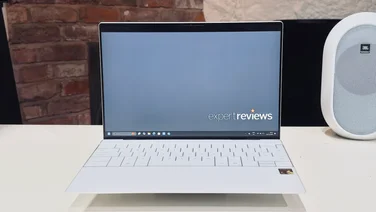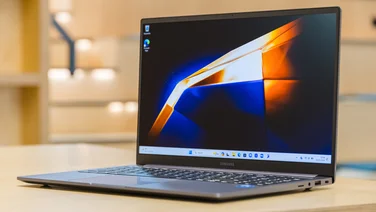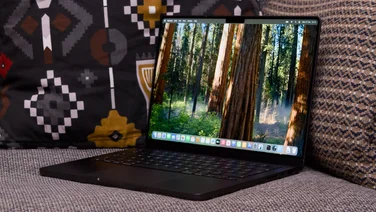To help us provide you with free impartial advice, we may earn a commission if you buy through links on our site. Learn more





Following in the footsteps of Sony’s premium Vaio Z series, the Sony Vaio Pro 13 oozes style from every corner. Its sleek, minimalist design looks stunning from every angle, but what makes the Pro 13 particularly impressive is its featherweight carbon-fibre chassis. Weighing a mere 1.05kg, it’s the lightest 13in Ultrabook we’ve ever tested, and we could feel a real difference when we held other 13in laptops like the Dell XPS 13 and Samsung Series 9 in each hand.

Such meagre dimensions come at a price, though, and the first thing we noticed was a worrying amount of flex in both halves of the chassis. We feared we might snap them in half if we applied enough pressure, and the keyboard tray also had a tendency to undulate underneath our fingers while we were typing. This made it feel far more fragile than either Dell or Samsung’s flagship ultraportable, and its travel-friendly weight wasn’t quite enough to balance out our concerns over the longevity of its build quality.
A super slim chassis also means there’s precious room for air to escape, and while there’s a small vent on the side of the Pro 13, even web browsing was enough to set them whirring quite loudly. This means the Pro 13 gets quite hot, and we found this was a real problem in our multimedia benchmarks.

Our review sample came with one of Intel’s latest fourth generation 1.8GHz Intel Core i7-4500U processors that can Turbo Boost up to 3GHz when there’s enough thermal headroom: the same processor that powers Sony’s Vaio Duo 13. While the Duo 13 produced an overall score of 55, the Pro 13 only managed 46.
Its Intel HD Graphics 4400 chip only managed 17.8fps in our Dirt Showdown test on High Quality settings at a 720p resolution, which is quite poor compared to the 26fps achieved by the Duo 13 under the same conditions. Gaming at its native 1,920×1,080 resolution was disappointing as well. We were only able to get above 20fps when we disabled the anti-aliasing and setting the quality to Low, but the sheer amount of noise emitted by the fans means the Pro 13 is likely to prove more frustrating than any decrease in graphical detail.
It’s worth noting that Sony’s Vaio Control Centre does allow you to alter the noise of the fan, but it’s tied in with CPU performance. It comes with three options: Silence, Standard and Performance. We ran our all of our tests in Performance mode, but when we ran our tests again in Silence mode, the difference in fan noise was barely noticeable. It also capped the processor’s Turbo Boost at 1.84GHz when it reached the video encoding section of our benchmarks, making it run even slower, and this just isn’t worth sacrificing when there’s such a negligible improvement in fan noise.
This is disappointing, as we quite liked the rest of the Pro 13. Flex issues aside, the backlit keyboard was very comfortable to type on and the bouncy-Chiclet style keys gave much more tactile feedback than the flatter keys of the Duo 13. The Pro 13’s rear hinge also gives the keyboard a slightly elevated angle, too, which was much better than typing completely flat.

Its smooth all-in-one touchpad was very responsive as well. It was a little too sensitive when we tried using it to pinch-zoom, but other multi-touch gestures like two-finger scrolling worked perfectly, and we didn’t have any problems bringing up the Windows 8 Charms bar or switching between individual windows.
Its 13.3in IPS touchscreen display was equally gorgeous. Its Full HD resolution is perfect for getting the most out of films and photos and our solid reds, greens and blues were all very bright and vibrant. Blacks weren’t quite as true as its frameless bezel, but they were still pleasingly deep. Our high contrast images looked great as well, with high levels of detail visible in each photo and rich colours to match.
It’s not quite perfect and we had a few problems with its viewing angles. Since the Pro 13 is a more traditional laptop, there’s a much more generous amount of screen tilt available, but we found there’s only a limited sweet spot where we didn’t notice any big shift in contrast across the screen, making it feel just as fixed as the screen of the Duo 13. We had particular trouble with our solid white image, as there was always some part of the screen that looked much greyer than the rest. This is a shame, as we really hoped the screen tilt would rectify the problems we had with the Duo 13.

Thankfully, its thin chassis doesn’t compromise too heavily on ports, as there are two USB3 ports, an HDMI video output, an SD card reader and a combined headphone and microphone jack. Its integrated speakers are good, too, even though they’re positioned right on the inner hinge of the laptop facing the screen. Our test tracks were a little on the tinny side, but there was a good level of base in all of them. Unsurprisingly, there’s no room for a Gigabit Ethernet port, but much like the Duo 13, spending an extra £60 will get you an Ethernet Wi-Fi adapter that plugs into the Pro 13’s power supply and doubles up as a wireless router as well.

We were very pleased with its battery life, too. It didn’t quite manage the massive 20 hours of the Duo 13, but its 11h 32m with the screen set to half brightness is still hugely impressive for such a small laptop. You’ll certainly be able to get a full day’s work out of it, but if this isn’t quite enough, there’s also the option of buying an extended battery that connects to the bottom of the chassis for another £80 which Sony claims will make the Pro 13 last for up to 18 hours.
Of course, this only adds to the already high starting price of the Vaio Pro 13, and at £1,079 for the touchscreen Core i7 model reviewed here, its various flaws become all the more magnified and problematic. It may be the lightest 13in Ultrabook ever made, but the heavier Samsung Series 7 Ultra is a better buy for most users.






